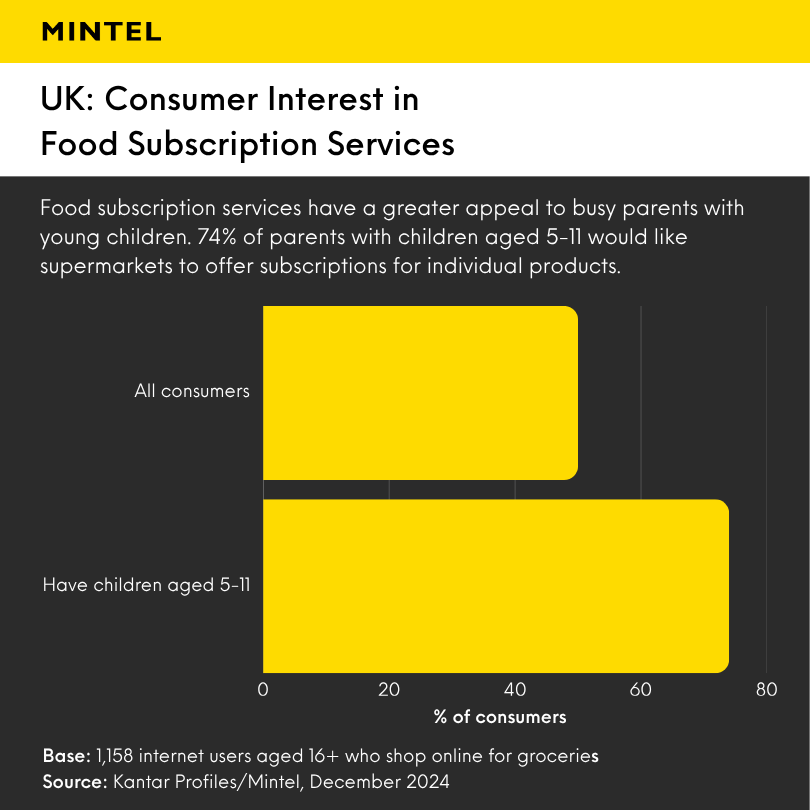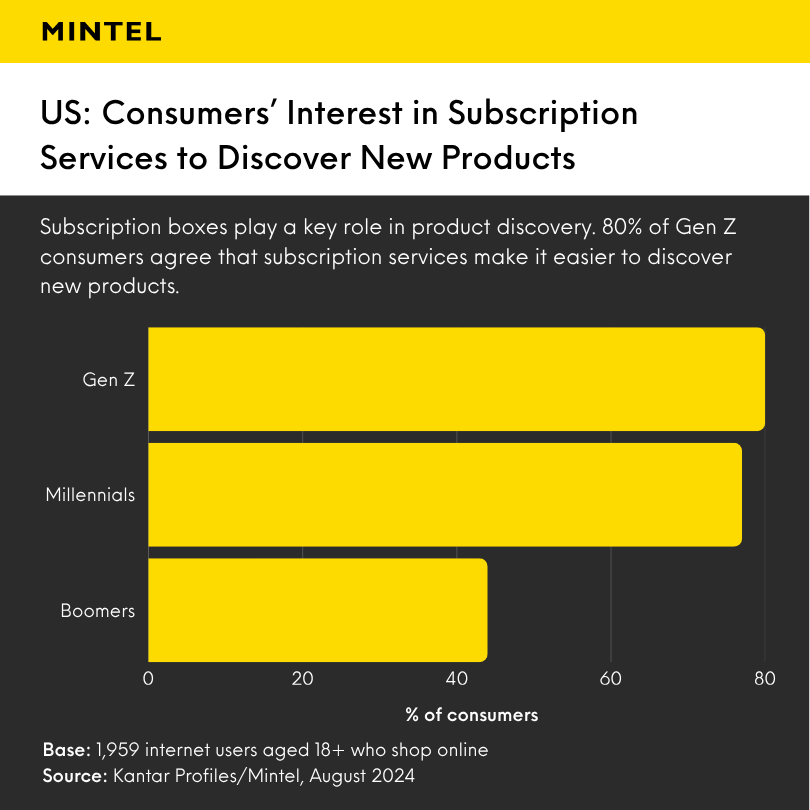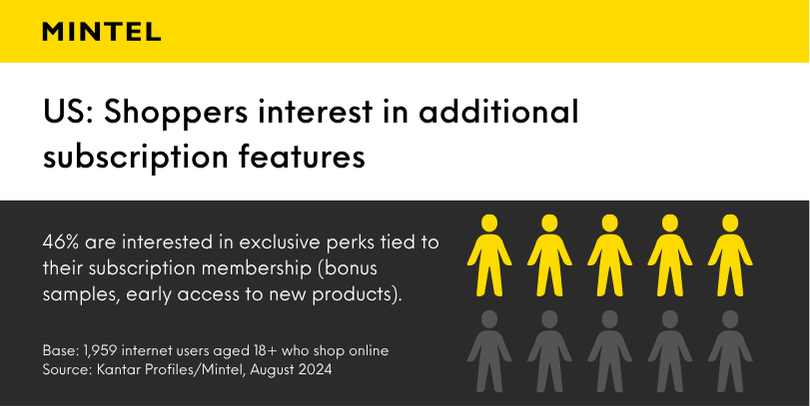Subscription-based business models are experiencing significant growth in the consumer packaged goods (CPG) industry, driven by consumer demand for convenience, personalisation and value. The emergence of the subscription box is already reshaping consumer habits and is creating a new avenue for brands to secure customer loyalty and recurring revenue. Once a niche concept reserved for beauty boxes, subscription models are now a widespread phenomenon in industries ranging from food and grocery to household, to beauty and personal care.
This article will break down how subscription-based models are transforming the CPG sector, the barriers to greater adoption, examples of innovators in the space, and the actions brands can take to adapt to and thrive in the subscription economy.
What is a Subscription-Based Model?
A subscription-based model is a business model that allows customers to pay a monthly or annual fee for access to a product or service. In the CPG industry, this means automating regular purchases of physical goods, ensuring a steady supply while saving time. It is unique comparedto one-time purchases, since subscriptions generate predictable revenue and can provide deeper insights into your consumer preferences through routine data collection.
Subscription Service Trends in the Beauty and Personal Care Industry
Beauty and personal care (BPC) subscription box services are nothing new, but they continue to grow in success and consumer demand. A significant 59% of US consumers have used BPC subscription services.
Subscription models in the beauty industry thrive by providing discovery, cost savings, variety, and personalisation, while blending luxury with aspirational value.
Types of Beauty Subscription Services:
Replenishment subscriptionsThese automate the delivery of specific beauty and grooming products regularly. A standout example is Dollar Shave Club, which delivers razors and related personal care products to its subscribing consumers.
Discovery or curated beauty subscription boxesThese boxes, as popularised by Birchbox, are revolutionising how consumers discover new BPC products. Tailored to subscribers’ preferences, these beauty subscription boxes often feature trending, full-sized samples, offering a fun, personalised experience. Birchbox set the standard by customising boxes to individual beauty needs, while brands like Think Beauty appeal to clean beauty enthusiasts with monthly curated boxes highlighting products rated for their ‘clean’ ingredients.
Exclusivity membership subscriptionBrands such as Beauty Pie and Thrive Market operate on a membership model where consumers pay recurring fees, granting them access to exclusive BPC products, discounts, or services, such as early access to new launches, free delivery, or exclusive events.
Professional treatment subscriptionsSome beauty salons and grooming venues now offer service subscriptions, like unlimited haircuts, facials, or massages, often with tiered pricing similar to gym memberships. For instance, The 5 Element in the UK provides two monthly subscription plans, with men paying £40 a month for unlimited haircuts.
Subscription Service Trends in the Food Industry
The food industry is experiencing a recent boom in the subscription space, providing a convenient solution for time-strapped consumers. From meal kits to recurring grocery essentials, these services meet the growing demand for reliable and fresh supply chains. It’s no surprise that 62% of US consumers have used food or beverage subscription services, with the appeal particularly strong among busy professionals and families. In fact, 50% of online grocery shoppers in the UK want supermarkets to offer subscription options for individual products—a number that climbs to nearly three-quarters among parents with school-aged children.

Types of Food Subscription Box Models:
Replenish servicesThis is a recurring service where consumers automate the purchase and delivery of specific food items. Examples include the Amazon Subscribe and Save model, which emphasises convenience.
Meal kit subscriptionSubscribers receive prepared meals or meal kits with pre-portioned ingredients and recipes to cook at home. Standout examples include HelloFresh and Blue Apron, which often focus on health, sustainability, or convenience.
Food rescue and sustainability subscriptionsThese services deliver boxes of surplus or near-expiry food at discounted prices, aiming to reduce food waste and appeal to eco-conscious consumers. An innovator in this space is Unwasted (client-access only), which offers users an opportunity to request mystery boxes containing products from brands such as PepsiCo.
Subscription Box Services Are Changing Consumers’ Purchasing Habits
Subscription box services are not just a convenience; they’re transforming purchasing habits in ways that go beyond simple automation. Consumers prize these services for their ability to find a balance between convenience, novelty, and cost management.
Convenience and time saving
For demographics like younger professionals and parents, time-saving features are essential. Subscription services eliminate regular store visits, automate recurring purchases, and free up schedules. For instance:
Given their time-consuming and busy lifestyles, parents value convenience and are likely to stay loyal to brands they trust. To capitalise on this trend, brands can offer direct product subscriptions with seamless delivery, ensuring essentials are always in supply. Adding value through tips, advice, blogs, or podcasts can further strengthen loyalty.
Discovery and trial of new products
Curated subscription boxes also play a key role in product discovery, particularly among younger generations, as Mintel’s research reveals that:
Gen Z and Millennials are more likely to seek novelty, experiment with new brands, and are usually the instigators of trends. Subscription services can tap into this behaviour to test acceptance of new products and brands. Brands can use sampling or add-on opportunities to get products into the hands of these exploratory generations.


Budget management and perceived value
While some consumers remain wary of the cost, represented by 55% of Germans who are reluctant to sign up for a new product subscription because of economic pressures, many see subscriptions as a way to help spread costs over time:
To overcome reluctance toward product subscriptions, brands can communicate price transparency and emphasise flexibility, such as the ability to easily cancel or pause subscriptions.
Barriers to Subscription Service Adoption
Despite the benefits, some hurdles prevent the wider adoption of subscriptions in CPG industries. Let’s walk through key barriers consumers face in adopting subscription services, and what brands can do to address their commitment hesitancy.
Cost and financial concerns
As mentioned, the cost of subscriptions is a major barrier, with almost half of Brits claiming that the rising economic pressures have made them cut back on the number of subscriptions they hold. In a similar vein, a third of US consumers cite expense as the primary reason for avoiding subscription services.
To address these concerns, brands can communicate clear pricing strategies that highlight overall cost savings versus single-item purchases.
Lack of flexibility
Consumers value control and flexibility over their subscriptions, and inflexible delivery schedules or strict cancellation policies can deter potential users. For example, Mintel’s insights reveal that:
To address these buyer hesitations, brands can focus on offering easy opt-ins, pausing delivery options, and seamless return policies.


Quality assurance
A strong barrier to entry for three in five British shoppers is a lack of confidence in the product quality provided by subscription services. Many consumers hesitate to commit without experiencing the product first.
To tackle this hesitancy, subscription services could offer free trials or smaller test kits to allow consumers to try before committing, or amplify genuine consumer testimonials in their marketing efforts to reassure the product’s quality.
How CPG Brands Can Adapt to the Subscription Economy
The subscription economy is projected to continue to grow, offering a significant opportunity for CPG brands ready to adjust their strategies. By implementing these steps, CPGs can fully benefit from the potential of subscription commerce.
Enhance omnichannel strategies Consumers are placing greater importance on seamless integration between online and in-store experiences. In fact, Mintel’s findings reveal that almost half of US Millennials want to pick up subscription products in-store. CPG brands should consider offering subscription options as part of their retail strategy. This allows customers to easily manage subscriptions, pick up items in-store, or discover subscription options while shopping in-store.
Prioritise personalisationPersonalisation is no longer optional; it’s essential. Allowing subscribers to customise their experience, such as choosing delivery schedules, selecting product types, or pausing subscriptions, can improve satisfaction, loyalty, and retention.
Address the demand for sustainability and eco-conscious optionsAs public concern for the environment grows, sustainability is an important factor in consumers’ purchasing journeys. Brands can accommodate environmental anxieties by introducing initiatives like compostable packaging, sustainable products, ethical sourcing or bulk refillable products. These efforts not only reduce environmental impact but also help brands stand out in a competitive market.
Offer exclusive discounts or member perksOffering exclusive discounts or member perks is a great way to add value and build customer loyalty in the subscription service space. Shoppers are keen on loyalty incentives, discounted rates for long-term contracts, and exclusive perks. By providing these benefits, brands can enhance the customer experience and encourage lasting engagement with their subscription services.


Move Forward in the Subscription Economy with Mintel: We Know What’s Next
The growing popularity of subscription-based models in the CPG industry is changing the way consumers shop and connect with brands. To succeed with this approach, businesses should focus on offering flexible, affordable, and personalised options. Subscription models also provide a unique opportunity for engaging brand storytelling. By addressing common concerns like cost and inflexibility through thoughtful marketing, brands can build a loyal and sustainable customer base.
Are you ready to elevate your brand’s offerings and provide subscription services to your consumers? Mintel provides the insights and strategy to help businesses stay ahead in a rapidly changing CPG landscape.
Subscribe to Spotlight to explore our free resources, or schedule a call with one of our experts to learn how to future-proof your business in the subscription economy.
Subscribe to Spotlight



